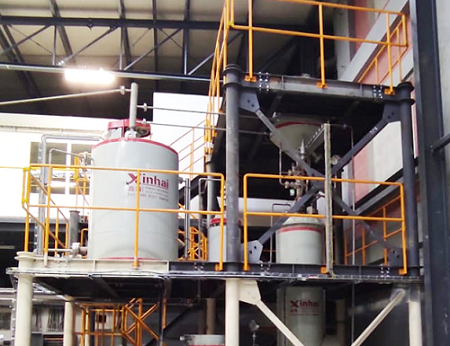Copper nickel sulfide flotation process
2023-04-13 Xinhai (1948)
2023-04-13 Xinhai (1948)
If you have any questions, please contact us through the following ways, we will give you more and better assistance!

Nickel is a ductile, ferromagnetic and corrosion-resistant metallic mineral. Widely used in steel, nickel-based alloys, electroplating, batteries, aerospace materials, military and other fields.
In the beneficiation operation, according to the ore properties, mineral composition and copper-nickel metal content of the copper-nickel sulfide ore, the beneficiation process mostly adopts the flotation process. They are: copper-nickel sulfide priority flotation separation, copper-nickel sulfide mixed flotation, copper-nickel sulfide pre-deliming and then flotation separation, copper-nickel sulfide graded grinding and graded flotation separation
In copper-nickel sulfide ores, copper is more floatable than nickel. When the nickel content in the ore is lower than that of copper ore, and the copper-nickel mineral monomer symbiosis relationship is simple, the preferential flotation process can be used. When the grinding fineness is -0.074mm and accounts for about 72%, Z-200 can be used for flotation copper. In copper-nickel mixed flotation, ammonium butyrate black drug and Z-200 are used as collectors, YB-5 is used as corrosion inhibitor, and copper sulfate is used as activator. Through this process, copper concentrate can be obtained directly, with low nickel content, simple process flow and low production cost. However, during the flotation process of copper ore, part of the nickel will be suppressed, and the subsequent nickel process will not be easily activated. At the same time, nickel is easily mixed into the copper concentrate, resulting in the loss of nickel in it.

1. Mixed flotation-direct separation process: Firstly, the mixed flotation process of copper and nickel is carried out. The concentrate is obtained and separated by flotation. The mixed concentrate can be separated by sodium sulfide and activated carbon. Afterwards, lime and sodium sulfite or new corrosion inhibitors are used for grinding and separation to obtain the result of floating copper and sinking nickel.
2. Mixed flotation-smelting-high nickel separation process: that is, the concentrate after mixed flotation is smelted in an electric furnace to form low-nickel ice. Low-nickel ice is transformed into artificial high-nickel ore by converter blowing, and high-nickel ice is regrinded and separated by flotation process. Refractory copper-nickel sulfide ores can be flotation-smelting-high-nickel matte mixed separation process with fine particle size, complicated association relationship and difficult direct flotation separation. The mixed concentrate is separated or re-grinded after sodium sulfide and activated carbon are removed, and nickel and copper are slowly flotationed with quicklime, sodium sulfite and a new corrosion inhibitor to realize the separation of copper and nickel. This method facilitates high copper and nickel recovery.

Copper-nickel sulfide ores are rich in gangue minerals such as serpentine, talc, and chlorite. Its minerals are soft and have good flotation properties. However, it is easy to form sludge during the grinding process, which affects the recovery rate of copper and nickel. For this copper-nickel sulfide ore with simple gangue mineral assemblage, pre-demineralization flotation process can be considered. Prior to the separation operation, the pulp is classified and deslimed prior to flotation. When the grinding fineness reaches -0.074 mm (60%), the combination of isobutyl xanthate and ammonium butyrate can be used as collector, CMC as inhibitor, CuSO4·5H2O as activator, kerosene and MIBC as float Pre-selection collector and frother to separate copper-nickel sulfide ore. This method can greatly remove gangue minerals and reduce the use of flotation agents.
During the ore-forming process of copper-nickel sulfide ore, some minerals will be altered, which will change the structure of the minerals and complicate the associated relationship between copper, nickel and other minerals in the minerals and gangue minerals. For this kind of associated copper-nickel ore with uneven particle size, there are four commonly used flotation processes for graded copper-nickel sulfide ore beneficiation. In the actual mineral processing plant, according to the selection of the process, it is recommended to consider finding a professional mineral processing manufacturer to conduct the mineral processing test. Through professional analysis, customize the copper-nickel processing technology that meets the actual situation.